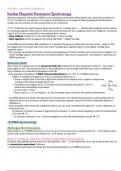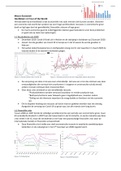Resume
Summary notes for AQA A-Level Chemistry Unit 3.3.15 - Nuclear magnetic resonance spectroscopy (A-level only)
- Cours
- Établissement
- Book
Summary notes for AQA A-Level Chemistry Unit 3.3.15 - Nuclear magnetic resonance spectroscopy (A-level only) by an Imperial College London MSci Chemistry graduate. Notes divided into the following sections: Chemical Shift, H NMR spectroscopy, C NMR Spectroscopy
[Montrer plus]





